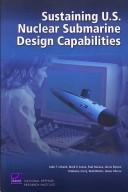| Listing 1 - 8 of 8 |
Sort by
|
Book
ISBN: 0356048004 Year: 1976 Publisher: London : Macdonald and Jane's,
Abstract | Keywords | Export | Availability | Bookmark
 Loading...
Loading...Choose an application
- Reference Manager
- EndNote
- RefWorks (Direct export to RefWorks)
Book
ISBN: 0669140155 Year: 1987 Publisher: Lexington Heath
Abstract | Keywords | Export | Availability | Bookmark
 Loading...
Loading...Choose an application
- Reference Manager
- EndNote
- RefWorks (Direct export to RefWorks)

ISBN: 0511833113 0511559135 9780511559136 0521413575 052105401X 9780521413572 9780521054010 Year: 1994 Volume: 30 Publisher: Cambridge Cambridge University Press
Abstract | Keywords | Export | Availability | Bookmark
 Loading...
Loading...Choose an application
- Reference Manager
- EndNote
- RefWorks (Direct export to RefWorks)
This book provides a complete history of the US Fleet Ballistic Missile programme from its inception in the 1950s and the development of Polaris to the deployment of Trident II in 1990. Writing in an accessible yet scholarly manner, Graham Spinardi bases his historical documentation of FBM development on interviews with many of the key participants. His study confronts a central issue: is technology simply a tool used to achieve the goals of society, or is it an autonomous force in shaping that society? FBM accuracy evolved from the city-busting retaliatory capability of Polaris to the silo-busting 'first strike' potential of Trident. Is this a case of technology 'driving' the arms race, or simply the intended product of political decisions? The book provides a comprehensive survey of the literature looking at the role of technology in the arms race, and seeks to explain technological development using a 'sociology of technology' approach.
Fleet ballistic missile weapons systems --- Ballistic missiles --- Strategic forces --- Weapons systems --- Nuclear submarines --- United States. --- U.S. Navy --- Submarine forces. --- Social Sciences --- Political Science
Book
ISBN: 026228023X 0585436401 9780262280235 9780585436401 Year: 2002 Publisher: Cambridge, Mass. : MIT Press,
Abstract | Keywords | Export | Availability | Bookmark
 Loading...
Loading...Choose an application
- Reference Manager
- EndNote
- RefWorks (Direct export to RefWorks)
In Building the Trident Network, Maggie Mort approaches the United Kingdom's Trident submarine and missile system as a sociotechnical network. Drawing on the sociology of scientific and technical knowledge and on actor-network theory, Mort recounts how the Trident program was stabilized in the United Kingdom and brought into "successful" production. She uncovers the nature of this success by retelling unofficial histories of Trident, of production roads not taken, and of potential technological "distractions." The production of Trident, she shows, was not inevitable but contingent and problematic. Using material from interviews and local texts, Mort explores the emergence of a counternetwork in the form of a workers' campaign for alternative technologies. She develops concepts of "disenrollment" and "absent intermediaries," in which redundant workers and marginalized technologies serve to discipline and reinforce the dominant network as production shrinks. She also examines the maintenance of the barrier between the technical and the social/political in this context. The management of uncertainties within the Trident production program emerges as critical to its successful completion.--
Trident (Weapons systems) --- Military-industrial complex --- Naval Science - General --- Military & Naval Science --- Law, Politics & Government --- Design and construction. --- United States. --- Great Britain. --- Procurement. --- Industrial-military complex --- D-5 Trident (Weapons systems) --- צי הבריטי --- U.S. Navy --- Defense industries --- Fleet ballistic missile weapons systems --- England and Wales. --- SCIENCE, TECHNOLOGY & SOCIETY/General

ISBN: 1281181161 9786611181161 0833042769 0833041606 9780833042767 9781281181169 9780833041609 6611181164 Year: 2007 Publisher: Santa Monica, CA : RAND Corp.,
Abstract | Keywords | Export | Availability | Bookmark
 Loading...
Loading...Choose an application
- Reference Manager
- EndNote
- RefWorks (Direct export to RefWorks)
For the first time since the design of the first nuclear submarine, the U.S. Navy has no nuclear submarine design program under way, which raises the possibility that design capability could be lost. Such a loss could result in higher costs and delays when the next submarine design is undertaken, as well as risks to system performance and safety. The authors estimate and compare the costs and delays of letting design capability erode vs. those of alternative means of managing the workload and workforce over the gap in design demand and beyond. The authors recommend that the Navy consider stret
Electronic books. --- Navy-yards and naval stations. --- Nuclear submarines. --- Shipbuilding industry. --- Nuclear submarines --- Shipbuilding industry --- Navy-yards and naval stations --- Naval Science - General --- Military & Naval Science --- Law, Politics & Government --- Design and construction --- Employees --- Atomic submarines --- Nuclear-powered submarines --- Navy-yards and naval stations, American --- Ships --- Nuclear warships --- Submarines (Ships) --- Fleet ballistic missile weapons systems

ISBN: 0585376875 9780585376875 0890968454 9780890968451 Year: 1999 Volume: 62 Publisher: College Station : Texas A&M University Press,
Abstract | Keywords | Export | Availability | Bookmark
 Loading...
Loading...Choose an application
- Reference Manager
- EndNote
- RefWorks (Direct export to RefWorks)
Nuclear submarines --- Lyon, Waldo --- Naval Science - General --- Military & Naval Science --- Law, Politics & Government --- Atomic submarines --- Nuclear-powered submarines --- Nuclear warships --- Submarines (Ships) --- Fleet ballistic missile weapons systems --- Design and construction --- History. --- Career in naval architecture. --- History --- United States. --- U.S. Navy --- Submarine forces. --- Arctic regions. --- Arctic --- Arctic Ocean Region --- Arctic, The --- Far North --- The Arctic --- Polar regions
Book
ISBN: 0804723036 9780804723039 Year: 1994 Publisher: Stanford, Calif.: Stanford university press,
Abstract | Keywords | Export | Availability | Bookmark
 Loading...
Loading...Choose an application
- Reference Manager
- EndNote
- RefWorks (Direct export to RefWorks)
S07/0350 --- Fleet ballistic missile weapons systems --- -Nuclear submarines --- -Sea-power --- -Dominion of the sea --- Military power --- Naval policy --- Navy --- Sea, Dominion of the --- Seapower --- Military readiness --- Naval art and science --- Naval history --- Naval strategy --- Navies --- Atomic submarines --- Nuclear-powered submarines --- Nuclear warships --- Submarines (Ships) --- Ballistic missiles --- Strategic forces --- Weapons systems --- Nuclear submarines --- China: Army and police force--Army, navy and air force: since 1949 --- History --- China --- -S07/0350 --- -China: Army and police force--Army, navy and air force: since 1949 --- -Atomic submarines --- Dominion of the sea --- Cina --- Kinë --- Cathay --- Chinese National Government --- Chung-kuo kuo min cheng fu --- Republic of China (1912-1949) --- Kuo min cheng fu (China : 1912-1949) --- Chung-hua min kuo (1912-1949) --- Kina (China) --- National Government (1912-1949) --- China (Republic : 1912-1949) --- People's Republic of China --- Chinese People's Republic --- Chung-hua jen min kung ho kuo --- Central People's Government of Communist China --- Chung yang jen min cheng fu --- Chung-hua chung yang jen min kung ho kuo --- Central Government of the People's Republic of China --- Zhonghua Renmin Gongheguo --- Zhong hua ren min gong he guo --- Kitaĭskai︠a︡ Narodnai︠a︡ Respublika --- Činská lidová republika --- RRT --- Republik Rakjat Tiongkok --- KNR --- Kytaĭsʹka Narodna Respublika --- Jumhūriyat al-Ṣīn al-Shaʻbīyah --- RRC --- Kitaĭ --- Kínai Népköztársaság --- Chūka Jinmin Kyōwakoku --- Erets Sin --- Sin --- Sāthāranarat Prachāchon Čhīn --- P.R. China --- PR China --- Chung-kuo --- Zhongguo --- Zhonghuaminguo (1912-1949) --- Zhong guo --- Chine --- République Populaire de Chine --- República Popular China --- Catay --- VR China --- VRChina --- 中國 --- 中国 --- 中华人民共和国 --- Jhongguó --- Bu̇gu̇de Nayiramdaxu Dundadu Arad Ulus --- Bu̇gu̇de Nayiramdaqu Dumdadu Arad Ulus --- Bu̇gd Naĭramdakh Dundad Ard Uls --- Khi︠a︡tad --- Kitad --- Dumdadu Ulus --- Dumdad Uls --- Думдад Улс --- Kitajska --- -Fleet ballistic missile weapons systems --- Sea-power --- Sea-power - China - History --- Nuclear submarines - China - History --- Fleet ballistic missile weapons systems - China - History --- China - History - 1976-2002


ISBN: 1402041721 1402041713 140204173X 9786610427352 1280427353 Year: 2006 Volume: 215 Publisher: Dordrecht Brussels Springer Nato Public Diplomacy Division
Abstract | Keywords | Export | Availability | Bookmark
 Loading...
Loading...Choose an application
- Reference Manager
- EndNote
- RefWorks (Direct export to RefWorks)
Similar to the three previous publications, which collected the materials of the NATO-Russia ARWs held in Moscow in 1995, 1997 and 2002, this fourth book addresses a very important challenge of the present – complex decommissioning of the nuclear-powered vessels taken out of service and environmental rehabilitation of the centers of basing and everyday running of different-type nuclear vessels. The fourth book specifically focuses on the scientific and technical problems of management of naval spent nuclear fuel and radioactive waste. Some papers address the first results of the "Strategic Master-plan ("Master-plan") for complex decommissioning of Russian nuclear-powered vessels" developed in Russia with active participation and large financial support of the international community. This fourth book, taken together with the papers of the three previous NATO ARWs published earlier, represents the most complete collection of materials on complex decommissioning of nuclear-powered vessels including the spent nuclear fuel management-related challenge.
Spent reactor fuels --- Nuclear submarines --- Radioactive waste disposal --- Combustibles nucléaires irradiés --- Sous-marins nucléaires --- Déchets radioactifs --- Management --- Congresses --- Decommissioning --- Congresses. --- Gestion --- Congrès --- Déclassement --- Elimination --- Spent reactor fuels. --- Nuclear Engineering --- Mechanical Engineering --- Engineering & Applied Sciences --- Combustibles nucléaires irradiés --- Sous-marins nucléaires --- Déchets radioactifs --- Congrès --- Déclassement --- EPUB-LIV-FT LIVINGEN SPRINGER-B --- Atomic submarines --- Nuclear-powered submarines --- Engineering. --- Nuclear energy. --- Nuclear engineering. --- Radiation protection. --- Radiation --- Waste management. --- Nuclear Engineering. --- Effects of Radiation/Radiation Protection. --- Waste Management/Waste Technology. --- Nuclear Energy. --- Safety measures. --- Nuclear warships --- Submarines (Ships) --- Fleet ballistic missile weapons systems --- Nuclear fuels --- Reactor fuel reprocessing --- Environmental protection. --- Waste disposal. --- Environmental quality management --- Protection of environment --- Environmental sciences --- Applied ecology --- Environmental engineering --- Environmental policy --- Environmental quality --- Radiation—Safety measures. --- Radiation monitoring --- Radiation protection --- Atomic energy --- Atomic power --- Energy, Atomic --- Energy, Nuclear --- Nuclear power --- Power, Atomic --- Power, Nuclear --- Force and energy --- Nuclear physics --- Power resources --- Nuclear engineering --- Nuclear facilities --- Nuclear power plants
| Listing 1 - 8 of 8 |
Sort by
|

 Search
Search Feedback
Feedback About UniCat
About UniCat  Help
Help News
News